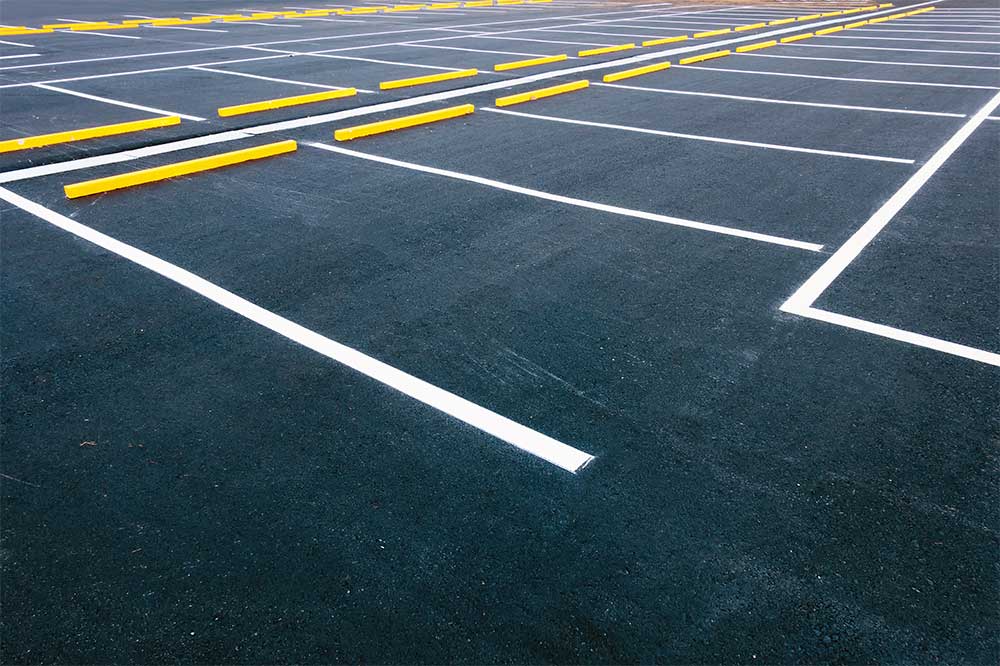Some Known Details About A1 Professional Asphalt & Sealing Llc
Some Known Details About A1 Professional Asphalt & Sealing Llc
Blog Article
A1 Professional Asphalt & Sealing Llc - An Overview
Table of ContentsOur A1 Professional Asphalt & Sealing Llc IdeasThe Ultimate Guide To A1 Professional Asphalt & Sealing LlcThe 7-Second Trick For A1 Professional Asphalt & Sealing LlcThe Best Guide To A1 Professional Asphalt & Sealing LlcGet This Report about A1 Professional Asphalt & Sealing Llc

The oil in a car engine is not simply oil. It contains a variety of additives to boost the car's efficiency. These include polymers, thickness modifiers, heat stabilizers, additional lubes, and wear ingredients. The REOB consists of all the additives that were in the waste oil as well as the wear metals from the engine (mainly iron and copper).
Nevertheless, by making several blends making use of various REOB samples and various asphalt binders, the variants largely can be balanced out. A number of States offered examples of recognized REOB composition to TFHRC researchers, that assessed the samples to contrast the percentage of added (understood) REOB to the discovered (examined) amount. The evaluations revealed an equivalent portion of included and found REOB.
The Single Strategy To Use For A1 Professional Asphalt & Sealing Llc
None of those States recognized that the asphalt they were getting included REOB. One State urged its samples had no REOB - https://zzri1z2o90l.typeform.com/to/BPqH2MM1.
Of the 1,532 samples examined, 12 percent included REOB, and some consisted of considerably high degrees of it at 1020 percent. The greatest degree was 34 percent in an example from Texas, which TxDOT had made use of in a patching substance. This screening likewise revealed the visibility of phosphoric acid in 11 percent of the samples, and 2 percent contained ground tire rubber.
2 years ago at TRB's annual conference, the Federal scientists held an REOB workshop and presented the findings of their lab examinations to a standing room-only crowd. Although some companies do not particularly prohibit REOB, they do enforce physical tests that avert its useeffectively a restriction. cold mix vs hot mix asphalt. Others do not ban it by spec, but have arrangements with asphalt distributors to stay clear of the use of REOB
Indicators on A1 Professional Asphalt & Sealing Llc You Should Know
A handful do allow REOB, some within certain limits. Ohio and Texas restriction levels to less than 5 percent of the asphalt. To develop a dependable test technique that all States can use, the TFHRC researchers set up a round-robin test plan. The individuals are 11 State highway firms (Illinois, Massachusetts, Minnesota, Mississippi, Montana, North Carolina, Oklahoma, South Carolina, Texas, Vermont, and Wyoming), 2 independent screening labs, the Ministry of Transportation in Ontario, Queen's College in Ontario, and an Ontario paving specialist.
In total, the scientists prepared and shipped 720 blends. The individuals are examining the samples separately using the standards given by the TFHRC researchers. The round-robin screening is almost finished, and TFHRC is in the process of accumulating the outcomes. The result will certainly be a suggested AASHTO test technique that any State can embrace and use (asphalt repairs).
The sidewalk with REOB, which is situated 0.6 mile (1 kilometer) from the sidewalk without REOB, has the same subgrade, traffic thickness, and climate. However, the sector of Highway655 with 5 to 10 percent REOB showed considerable cracking. In this instance, the visibility of REOB was the identified root cause of fracturing at a reduced temperature levels.
A section of test sidewalk in Minnesota (MN1-4) located to have REOB likewise fractured too soon. The sidewalk performed well for the initial 3 to 4 years, but after that began to fracture.
Getting My A1 Professional Asphalt & Sealing Llc To Work
The tests were not substantial, but they showed that at degrees of 6 percent or more, the tensile toughness of the asphalt went down considerably. At a degree of 3.5 percent REOB, the variation in the physical examination approaches was more than the result of REOB. In truth, it was hard for researchers to evaluate whether REOB was present.

One binder parameter thought about is the difference in between the low temperature level essential requirements temperature level for tightness (S) in the flexing beam of light rheometer and the bending beam rheometer creep slope (m-value) noted as Tcritical. TC = TC (S) TC (m-value). Analysis of this parameter is still recurring. Two independent research study teams, one from AASHTO and the other from the Asphalt Institute, ended that even more research study is needed on making use of REOB in asphalt.
Formerly, all asphalt screening determined design properties such as rigidity. These tests do not show what materials had been contributed to the asphalt. One example gotten throughout the TFHRC research had an extremely weird analysis. The example had the following test results: Superpave PG 64-28 with a heat grade of 67.3 Tcritical on the flexing beam of light rheometer was 6.7 levels Celsius.

A1 Professional Asphalt & Sealing Llc Fundamentals Explained
These results demonstrate there are weak points in the standard design testing methods that might be made use of. The manufacturer may have a financial advantage and the product passes all the standardized examinations, however the item might not be useful to ensuring long-lasting efficiency. To resolve this problem and the development of new asphalt ingredients and extenders, TFHRC is beginning a research try these out program to utilize handheld spectroscopic devices, x-ray fluorescence spectroscopy, and Fourier change infrared spectroscopy to make it possible for evaluations to be carried out in the field as opposed to having to take samples back to the lab.
Report this page